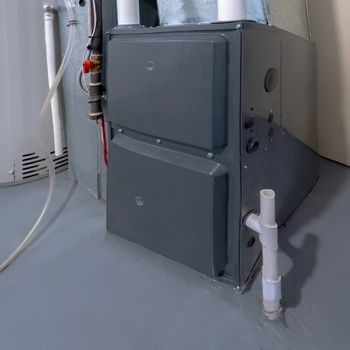How to Prevent a Furnace Fire
 Many people depend on a furnace to heat their homes, yet this appliance is one of your property’s most significant fire hazards.
Many people depend on a furnace to heat their homes, yet this appliance is one of your property’s most significant fire hazards.
According to figures from the National Fire Protection Association, heating equipment like furnaces, space heaters and fireplaces is one of the top sources of house fires. The Federal Emergency Management Agency has echoed these findings, stating that heating appliances are a common cause of residential fires.
Without a heat source, your home can reach dangerously cold temperatures and you risk having your plumbing freeze. Understand how a furnace can catch fire and what you can do to avoid this risk, while still heating your home.
How Furnaces Catch Fire
Generally, a furnace catches fire in two scenarios: the appliance overheats, often due to a blocked air filter or flame rollout occurs, causing the fire to spread to adjacent objects and through your home. Understand these common sources.
A Blocked Air Filter
A filter clogged with debris reduces air flow within the furnace. This causes the appliance to work harder and increases the risk that certain parts will overheat, such as the motor.
Cleaning the filter is a standard part of furnace maintenance. It traps dirt, dust, pollen and other debris, so these particles don’t flow through the furnace and cause damage, and improves how the appliance operates.
Yet once the filter becomes clogged, the furnace needs to exert more effort to draw in clean air. When this occurs over a prolonged period of time, the motor may catch fire or flame rollout happens when the furnace doesn’t have adequate ventilation or a consistent supply of oxygen. Considering these factors, get in the habit of cleaning or changing the air filter at least once per month.
Overheating
When the filter does not do its job, dirt and debris begin to gather around internal parts within the furnace, including the motor and bearings. These form a coating that can cause the parts to overheat, wear out sooner and potentially catch fire. Along with regularly cleaning the filter, make sure key parts remain lubricated. Poorly installed parts and wiring have also been known to increase voltage and contribute to a fire.
Flame Rollout
When your furnace no longer has an adequate supply of oxygen and sufficient ventilation, you risk flame rollout. In this scenario, the flames extend beyond the appliance’s controlled combustion area. If you have combustible materials close to the appliance – fuel, paper or textiles – these can catch fire and cause the flames to spread quickly through your home.
Aside from a clogged filter, accumulation of creosote and soot, a bird’s nest or yard debris or supplies placed near a vent can also restrict air flow, increasing the risk of a flame rollout.
Even if your furnace continues to perform, subtle signs can also indicate the early stages of flame rollout, including discoloration around the furnace cover and burned components or materials close to the appliance.
Gas Pressure
Aside from the flow of air, gas is also key to the furnace’s combustion process and needs to enter the controlled chamber at a specific pressure. Improper regulation can alter the air-gas mix, causing condensation and corrosion to form in the heat exchanger.
These factors can cause the appliance to overheat and accumulated debris like soot and dust to catch fire. The flames do not remain contained here and can spread throughout your home’s HVAC system.
A Cracked Heat Exchanger
The furnace’s heat exchanger – a part key for controlling and heating the air – experiences wear and tear over time. Due to the conditions, the metal composing the part contracts and expands. This pattern can result in small fissures and holes that cause carbon monoxide to leak out.
Not only does this development expose you to a toxic gas in your home, but the heat exchanger no longer adequately transfers warm heat throughout the HVAC system and you may circulate a flammable compound through your ducts and into the air.
What You Can Do
To anticipate the risks detailed above:
- Get in the habit of cleaning the air filter and removing any soot and creosote buildup.
- Have the flue and ducts inspected for blockages that could be restricting air flow and oxygen.
- Move any combustible materials at least three feet away from the furnace.
- Have a rollout switch, designed to shut off the appliance when it overheats, installed.
- Schedule annual maintenance and cleanings to replace older, worn-out parts and remove any debris.
Schedule a maintenance inspection with our residential HVAC technicians at MJ Fahy & Sons. Contact us to learn more.




